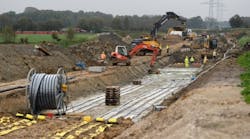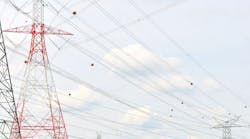In the first article of this two part series, U.S. Power Reliability: Are We Kidding Ourselves?, our expert panel looked at some numbers that indicate that U.S. power reliability isn’t doing so well compared to some other countries, and it may be getting worse. In Part II the panel discussion transitions to undergrounding both here and in Europe. Toward the end, the panel pretty much agrees that outage information provided to the customer may be even more important for customer satisfaction than the actual reliability statistics. Ancient metrics such as standard reliability indices are for the engineer, not the consumer.
However you cut it, reading both articles provides a great handle on a major issue that the utility industry and its regulators have yet to fully understand or face head on.
We’d sure like to hear even more of your comments and debate. Don’t pull your punches!
Paul Mauldin
Cause and Effect and Cost
Consider cause and effect and cost. The reliability numbers from different countries are a measure of effect. But, are the challenges/causes the same? I don’t know about high wind storm (hurricane or tropical storm) frequency in Europe. I suspect Japan has its share. Same can be said of real anomalous ice storms. (though, maybe with global warming this isn’t an issue =) I do know that the United States has 75% of the world tornado activity. I suspect no one thinks that systems can be hardened for tornados! So, while comparisons of results may be interesting, a comparison of the challenges/causes of un-reliability might merit consideration. And, if after hardening there are still events that can crash the system (like tornados) was the other work worthwhile?
Additionally, the impact of hardening on customer cost should be considered. Lately, cost consequences of a lot of far-reaching moves seem to not be discussed at all. I know that in California we simply must have a 30% renewable energy portfolio. I am totally unaware that anyone from policy makers through the utility “chain” have ever seriously addressed what this is going to cost the customer in either dollars or reliability. Some of the countries mentioned to have ‘better’ reliability than the United States are fairly high cost of energy locations.
Finally, we need to also be aware of the latest (or most trendy) warning that the sky is falling. A year or so ago (IEEE Spectrum cover) the worldwide grid was going to fall to pieces after the next solar storm. There is a similar “running around in circles” temptation to storm-caused outages. It’s a big deal when it happens (especially if it happens in the Northeast). But, is it a big enough deal to re-build the power delivery system on a nationwide basis??
-Vito
Undergrounding Long Term
Vito, you state "Some of the countries mentioned to have ‘better’ reliability than the U.S. are fairly high cost of energy locations." When talking about networks, the only costs that are meaningful are those that are disaggregated and which can be attributed to the network. I have given some indications of these already. I would be most interested to hear about DNO & TSO costs in the USA in terms of UScents/kWhr delivered...
In terms of undergrounding, as a trainee engineer I worked with jointers connecting new cables to those laid in the early part of the 20th century (1905). Some of these were originally DC tram cables - which nonetheless function fine in an AC environment. They are still functioning fine now 110 years after laying (and we are talking direct lay - PILCSTA). So, undergrounding could/should be regarded as an action that installs assets with very, very long lives. This, of course, has a direct impact on how "cost" is perceived.
Numbers follow from a document I have from United Utilities - the bunch that runs the network in the UK's Northwest
LV cable = £58k/km
Service cable £35k/km
From Google earth a typical UK 200 house estate = 2kms of LV cable and 6kms of service cable. Total cost = £326k. Given a life of 100 years then the cost per household per year (just for the capital) is around £16. UK households pay around £120 per year for TSO & DNO costs. Most of the cost in any network sits on the LV/MV part - so yes being a DNO in the UK looks quite good.
Took a look at a U.S. estate in St Louis (famed for its sprawl?) Density was not a million miles away from the UK estate I looked at. I'm not saying that the U.S. should launch a large-scale urban/suburban undergrounding programme - but the costs do not look bad - provided you take a long-term view.
-Mike
How Rates Are Based
Good points both of you, Mike and Vito.
I don't know how rates are set in the UK, but in the United States, the rates are based on a depreciation life that may not reflect the actual service life of the asset. A cable that is fully depreciated over 30 years may have a life of, say, and the hundred or so that Mike illustrates. It would be to the benefit of the utility shareholders to replace the cable at 30 years. But it would benefit ratepayers to hold off until some optimal point where the risk of failure is somehow agreed to by all (regulators, investors, ratepayer advocates) to be unacceptable.
That would require a complete revamp of the way we set rates and maintenance practices in the United States.
Of course, as Ike has pointed out elsewhere, publicly owned utilities have less constraints on optimizing for the ratepayer/owners.
-Paul
Cable Age Not a Factor
To my knowledge in the UK, cables have not been replaced due to age. Ofgem, (Office of Gas and Electricity Markets the UK energy regulator) would never allow it - given that the DNO would first need to show the cable needed replacing.
-Mike
Don't Treat All Cable Installations Equally
Regarding underground cables, one needs to be careful not to treat all cable installations equally. I suspect that those installations where conduit and monitoring are used have longer lives than direct burial installations. At least conventional wisdom would lead one to believe that. I hear talk from among utilities that predicted viable direct burial cable lifetimes are too uncertain for comfort. The threats are many: insufficient crosslinking in insulation, too many corona discharge sites due to insulation contamination, overheating (especially in soils with high thermal-transfer resistance), use of wrong backfill where used, dig-ins, neutral wire corrosion, varmint munching, etc. These concerns have been a driver for some of the sensor and failure monitoring and forecasting research for direct burial underground cable we have been doing at UC Berkeley.
Although it is ancient history, this personal anecdote might still have relevance. Back in the 70s, when I first went to work for an electric utility, I was given the job of examining coupons of underground cable the company had purchased. I was chemically determining the percentage of crosslinking, and visually identifying the density of corona discharge sites created by contamination, in the insulation. When a particular batch of cable failed to meet the specifications, we returned the cable to the vendor. Once, when the vendor visited with us in the lab while at the company to initiate a return authorization, we asked what would happen to the cable. He said it would be sent to another company that didn’t test samples. I don’t know if it was a tongue in cheek joke or the truth.
At the other end of the spectrum in that same company and the same time, the company was installing a transmission underground cable through the heart of the city. Given the high financial stakes involved, the company was doing a lot foundation work before construction. I had the job of developing a lab methodology for how to physically measure soil thermal resistivity, and subsequently, because we found the local soil to be very poor in thermal transfer capacity, identifying or developing a synthetic backfill with lower thermal resistivity. These preventive measures apparently worked because the cable didn’t fail. It also apparently kept tigers away because the only tigers seen in the vicinity were in the zoo.
-Merwin
Worst Enemy in UK is a Varmint
Not Just the Infrastructure
Just a quick thought on underground service. I too live in an underground subdivision (43 residences with UG loop) served by an overhead feeder one mile from the substation. On Monday, Aug. 18 -- in perfectly good weather -- a car took out one of the riser poles at 5:14 a.m. It took 11 hours for the utility to replace the riser and they did not bother to switch the loop so the customers (~25) were served from the other riser. Since Aug. 18 the affected riser pole has been grounded for unknown reasons.
It shows me that it is not solely the physical infrastructure; but it also depends on a reasonably skilled group of distribution operators. You can have the best of distribution systems, but if the responders are not trained or do not think, the results will not be what you have paid for.
-Ed
Aesthetics or Reliability?
I wonder, as a practical matter, if the spread in attributes between above and underground is greater for aesthetics than it is for reliability? (;-)
Paul - I think your vision (of a Distribution System Operator and “Customer Edge”) has begun in California, and the microsynchrophasor development work Sascha is leading might be an important critical path item.
-Merwin
Losing Customer Advocacy
Speaking from the “customer edge,” I think DSO is a thinly disguised attempt to remove the last vestige of customer advocacy from the power supply food chain, so ratepayers can be ramrodded with ideological policies and surcharges and rate structure changes from on high without the buffer and protection of a locally-vested enterprise that will organize and lobby to resist on their behalf. When people from the local power company meet their customers in the supermarket and sit next to them in the pews, it is easier to spend the stormy night restoring power and harder to pass on rate hikes from the G&T world. The 905 U.S. electric power co-ops don’t have to split their loyalties between customers and shareholders. Like geography, this is part of what makes the American electrical grid unique. The response of many northeastern municipalities in the wake of Superstorm Sandy was to rue the day they sold out their utilities to private operators to reap a short-term windfall. But, most had become so indebted in the interim that they have no chance to ever purchase them back. DSO goes in my “worst ideas ever” bin.
-Ike
Undergrounding Only the First Step
Reliability at What Cost?
I was talking with an engineer at a local engineering firm who asked if he could sign up for a lower bill if he was willing to accept a lower level of reliability.
But he knows that his reliability is determined by the network in his neighborhood, not by a category selected when he signs up for service.
I had been contacted by Tokyo Electric Power Company years back and their comment was that they thought that their grid was too reliable and too costly and that they were looking for smart ways to reduce costs and were willing to concede a level of reliability. So my thought is “reliability at what cost?”
-Rick
3 Levels of Reliability
There are 3 levels of reliability: what you want, what you gladly pay for, and what you get.
-Merwin
Reliability is a Quality Function
Good point. Singapore maintains and touts high levels of reliability but I doubt the folks in Dime Box, Texas (yes, it’s a real place – right down the road from Old Dime Box) are going to be willing to spring for the cost necessary to achieve a comparable level of performance.
Also, high reliability is basically a quality function. While I was at Austin Energy, our hi-tech customers pressured us into becoming ISO certified. They said that we were the only vendor in their supply chain that was not ISO certified. Have any other utilities pursued such actions?
As an aside, Rick, hasn’t Fort Collins been converting their overhead distribution to underground for some time now? Have they experienced any reliability gains from their efforts?
-John
Fort Collins Example
Fort Collins was putting in some of the most innovative underground systems I’ve ever seen starting back in the 50s. They are below ground and quite reliable.
These are some forward-thinking dudes!
-Rick
Customer Satisfaction Influenced by Rates
I agree with almost everything said here. One thing, however, that should be recognized is that customer satisfaction is strongly influenced by rates and what the monthly bill comes to. As a former utility CEO in different states, it has been my experience that this dominates the measure of customer satisfaction along with the influence of other factors in the aggregate.
-Matt
Electricity is a Means to an End
I don't disagree that the size of the bill is a factor. I feel that customers actually consider value more than they do cost. Again, utilities have the ability to manage customer expectations and comparative value. In the case of residential customers, I suspect that most will spend more per month on cable TV and cell phones than they do for electricity. I also suspect that they experience more dropped calls than they do power interruptions. For commercial and industrial customers, many utilities have successful programs of communication and collaboration to help them realize maximum value from their investment in electricity.
If we took some of the money we're spending on new system capacity and diverted that to help customers use electricity more efficiently (generating negawatts), I'm confident we would get more bang for those bucks and address the component of customer satisfaction that is related to the size of the power bill. That also addresses the component that we care about them.
We can't forget that customers could care less about electricity. What they really want is heat in the winter, cooling in the summer, their motors to run smoothly and no blinks during the Super Bowl. Electricity is simply a means to the end for them.
-Dave
Crises Equal Opportunities
Dave is completely on target with his customer satisfaction comments. Top consumer companies have long recognized that exceptional service recovery represents a unique opportunity to create loyal customers.
A story about a local car dealership is a good example. I met a man several years ago who bought a new car and when driving the vehicle home the car just stopped running. Obviously dismayed and angry, the man called the dealership to voice his displeasure. The dealership asked for his location and told him that they would have a replacement car delivered to him right away and they would take his car back to be fixed.
When the replacement car arrived, the man was surprised to discover the dealership’s general manager behind the wheel. The general manager apologized for the breakdown and personally assured the man that the new car would be fixed or he would find the man another car. Even though the man had suffered an awful service failure, he said he would not buy a car from anywhere else because he knew this dealership would take care of him regardless of what went wrong.
The general manager could have easily sent a subordinate to deliver the car but he recognized his dealership was facing a moment of truth that required his personal attention. His response converted an extremely dissatisfied customer into a lifelong customer.
I’m not saying the CEO should show up every time a tree limb falls on an electric line, but outages provide utilities moment-of-truth opportunities where they can truly boost their standing with their customers.
-John
Service is of Value
Great comment here. If we believe we deliver energy services and not just electrons, then how that service is performed is very much a part of its value to the consumer.
- Ike
Communications Could Be Key
Absolutely on target! For years I’ve been suggesting that electric utilities, along with cable providers and others, improve communications to customers during breaks in service. Clearly, they could use email and social media at minimal cost. People just want to know that somebody cares, that somebody is working to solve the problem, and of course they’d like an ETA for service restoration.
-Lee
Airlines are an Example
Airlines texting you departure updates are another perfect example. Doesn’t seem to be breaking the bank, but sure makes a difference. Even when they can’t get the plane there on time.
-Sascha
ETA is Wanted
Most of all they want the ETA. I have been on the front lines on using social media to communicate with customers during major storms and they are not satisfied unless you can tell them when power will be restored.
-Matt
J.D. Power Study Confirms
Correct. JD Power study confirms that if you are more than 30 minutes late customer satisfaction declines below those customers who got no information
-Dave
Gaining a New Perspective
So, folks, this ends the discussion. We didn’t resolve the issues, but several of us, including myself, got a new perspective. My takeaway was that we’ve been so focused on the metrics of reliability (SAIDI and her sisters as Dave Lankutis likes to say) that we’ve neglected the customer perspective. There’s plenty of evidence that the customer is most sensitive to the quality and timeliness of outage information that the utility provides – even more than the precise number of outage minutes and frequency.
What do you think? We sure like to see your comments!
















